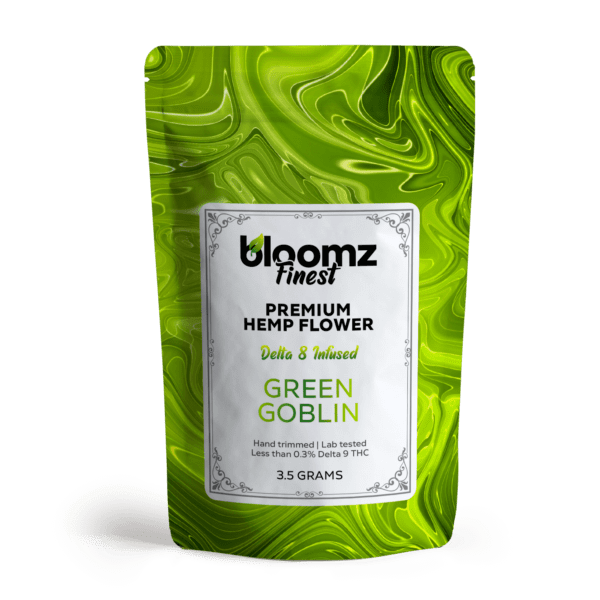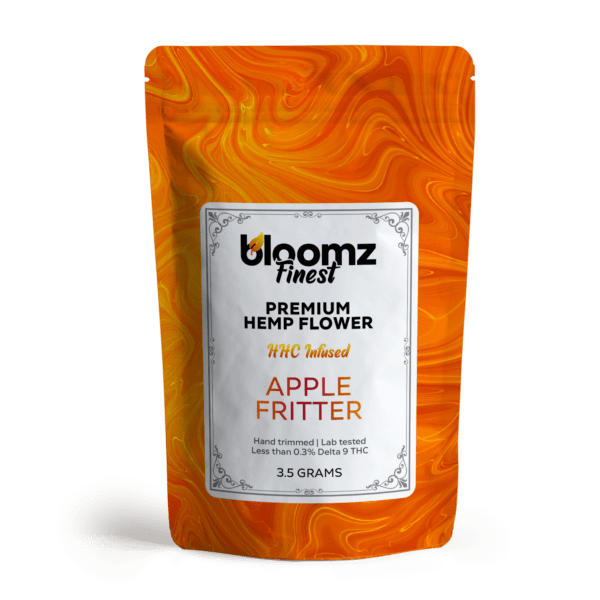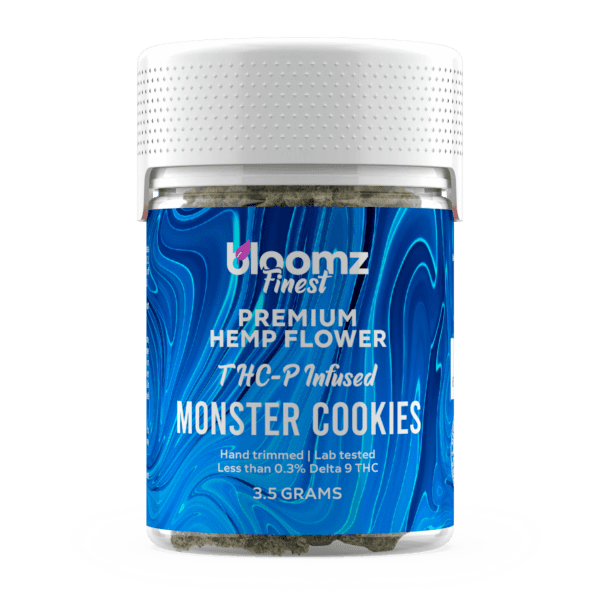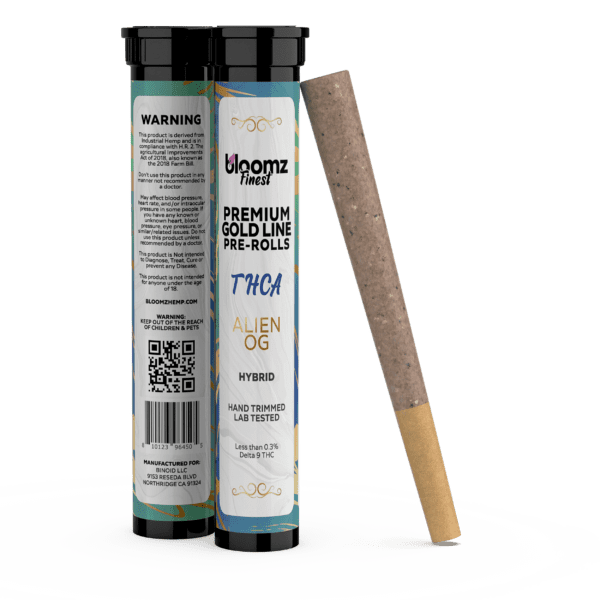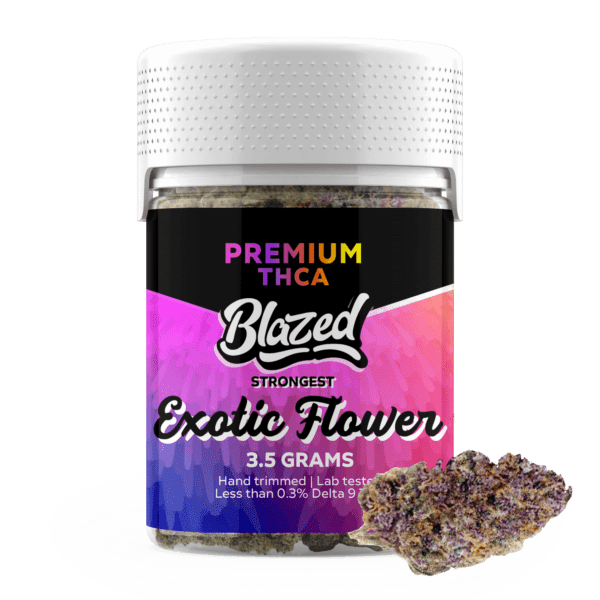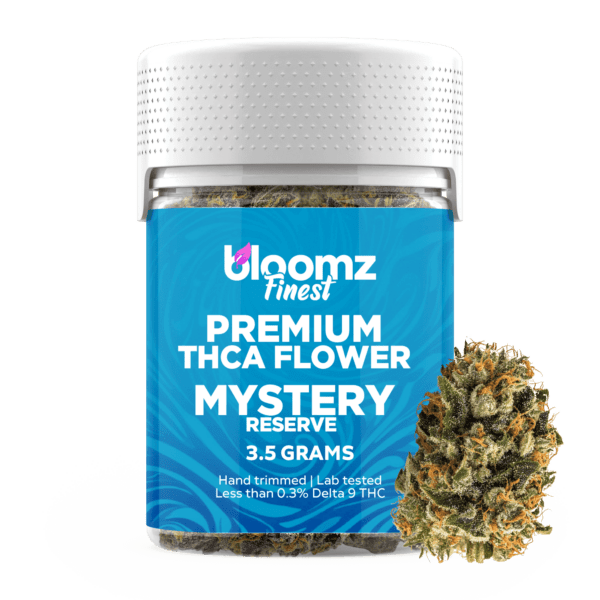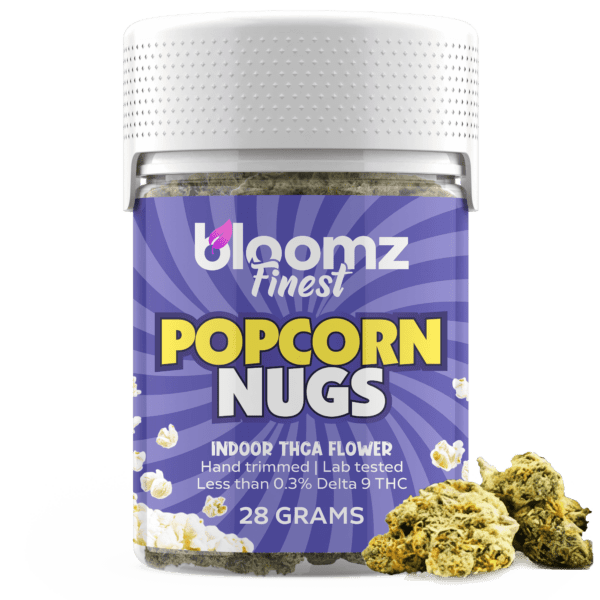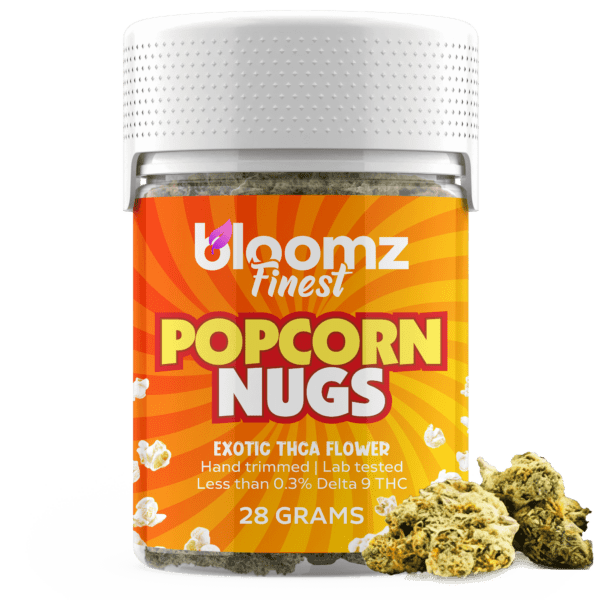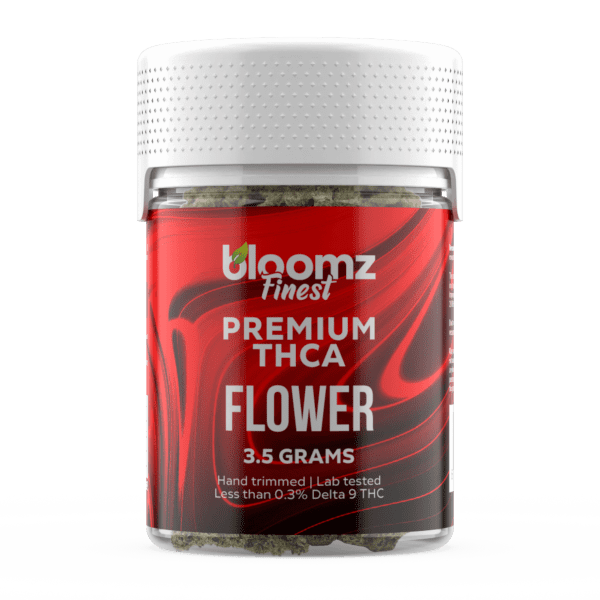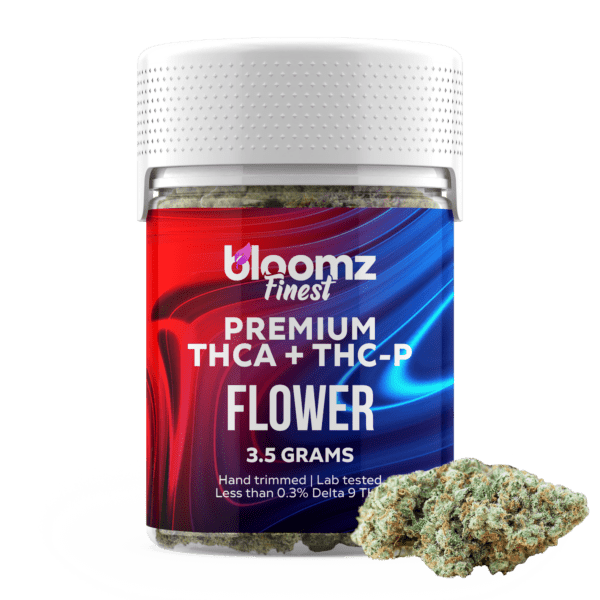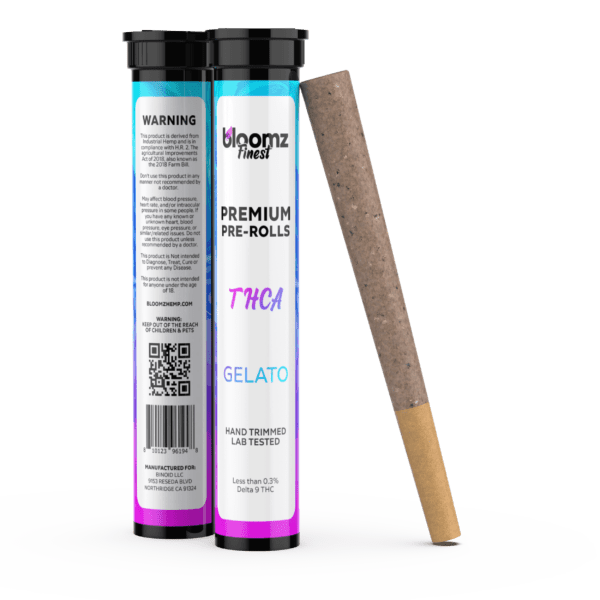In the modern quest for relaxation and novel experiences, the worlds of scientific innovation and ancient tradition have presented two compelling, yet profoundly different, offerings. On one hand, we have Delta 8 THC Flower, a product born from the intricate chemistry of the hemp plant, offering a gentler, more approachable psychoactive journey for the curious consumer. It stands as a symbol of our ability to isolate, understand, and transform natural compounds to create a specific, desired effect.
On the other hand, from the sun-drenched volcanic islands of the Pacific, comes Kava, a revered root steeped in millennia of ceremonial and social use. Kava offers a path not to a psychoactive high, but to a state of clear-headed tranquility and communal well-being. This is a fascinating comparison between a carefully manufactured cannabinoid experience and a time-honored botanical ritual, each with its own unique story, chemical makeup, and philosophy of use.
TO BUY DELTA 8 THC FLOWER CLICK HERE
Recommended products
Why It’s Important to Breakdown the Matchup of Delta 8 THC Flower vs. Kava
In an era saturated with choices for personal well-being and recreation, a detailed comparison between Delta 8 THC Flower and Kava is more than just an academic exercise—it is a necessary guide for mindful consumption. These two substances, while both capable of inducing a state of calm, operate on fundamentally different principles and deliver starkly contrasting experiences.
To understand their matchup is to appreciate the vast diversity of the botanical world and the different ways in which plant-derived compounds can interact with human consciousness. A thorough breakdown demystifies the conversation, allowing individuals to make choices that are not only safe and legal but also deeply aligned with the specific kind of experience they are seeking.
This side-by-side analysis is crucial for empowering consumers in several key areas, ensuring they can navigate their options with both knowledge and confidence:
-
Distinguishing Origin and Production: Delta 8 THC flower is a manufactured good; it is hemp flower that has been coated with a cannabinoid distillate created through a laboratory process. Kava, conversely, is an agricultural product, a root that is simply harvested, dried, and ground. Understanding this fundamental difference between a semi-synthetic, infused product and a raw, natural botanical is the first step in appreciating their distinct characters.
-
Contrasting the States of Being: The subjective effects of these two contenders could not be more different. Delta 8 THC produces a definite, albeit mild, psychoactive high that alters perception and elevates mood. Kava is non-intoxicating in the traditional sense, fostering deep relaxation and calm while preserving or even enhancing mental clarity. This is the core experiential difference: a gentle journey into a classic “high” versus a deep dive into a lucid state of serenity.
-
Clarifying Legal and Social Contexts: The legal standing of both substances is complex. Delta 8 THC‘s legality is based on a debated interpretation of federal law and is explicitly banned in many states. Kava is broadly legal as a dietary supplement but has faced regulatory scrutiny in the past. Socially, Delta 8 is part of the modern cannabis culture, while Kava is gaining acceptance through communal Kava bars that offer an alternative to alcohol-centric socializing.
-
Promoting Responsible and Safe Use: With both markets largely unregulated, knowledge is the consumer’s best tool for safety. For Delta 8, this means understanding the importance of lab tests that screen for residual solvents from the chemical conversion process. For Kava, it means understanding the difference between high-quality “noble” root and potentially harmful “tudei” varieties. A detailed comparison highlights these critical safety considerations, promoting a more responsible approach to both.
Contender #1: Delta 8 THC Flower
Our first contender, Delta 8 THC flower, is a true product of the modern hemp revolution. It burst onto the scene following the passage of the 2018 Farm Bill, quickly becoming one of the most talked-about and sought-after products in the cannabinoid market. It represents a fascinating intersection of agriculture, chemistry, and consumer demand, offering a novel experience that sits in a unique space between non-intoxicating CBD and the more potent Delta 9 THC found in traditional marijuana.
Delta 8 THC flower is not something you can find growing in a field; it is a testament to human ingenuity, a carefully crafted product designed to deliver a specific, sought-after effect. Its rise to prominence has been both meteoric and controversial, making it a compelling and complex figure in the world of botanicals.
Delta 8-tetrahydrocannabinol (Delta 8 THC) is a naturally occurring cannabinoid found in the cannabis plant, but it only appears in minuscule, often untraceable concentrations. It is an isomer of the more famous Delta 9 THC, meaning they share the same chemical formula (C21H30O2) but have a different atomic structure. This slight difference—the location of a double bond in their carbon chain—has a significant impact on how the molecule interacts with the body’s endocannabinoid system (ECS), specifically the CB1 receptors in the brain.
This structural variance is why Delta 8 THC is reported to be significantly less potent than Delta 9 THC, producing a milder and more clear-headed psychoactive effect. Because it’s not feasible to extract natural Delta 8 THC in commercial quantities, the vast majority of Delta 8 THC on the market is created in a laboratory through a chemical process called isomerization, where hemp-derived CBD is converted into Delta 8 THC distillate.
This leads to a crucial and often misunderstood point: “Delta 8 THC flower” does not naturally exist; it is a manufactured product. The process begins with a high-quality, legally compliant hemp flower, which is rich in CBD or CBG but contains less than 0.3% Delta 9 THC. This hemp flower serves as the base or chassis for the final product. The psychoactive component, Delta 8 THC, is then added to this base flower in the form of a thick, sticky oil known as distillate.
Recommended products
The result is a product that looks, smells, and can be consumed just like traditional cannabis flower, but its effects are derived from the infused cannabinoid. The multi-step production process of Delta 8 THC flower is a blend of agriculture and chemistry, specifically:
-
Hemp Flower Cultivation: First, cultivators grow premium hemp strains, often well-known varieties like Sour Diesel or Bubba Kush, focusing on producing beautiful, aromatic buds with a rich terpene profile. These plants are grown to be fully compliant with the 2018 Farm Bill.
-
Harvesting and Curing: Once mature, the hemp flower is harvested, dried, and carefully cured to preserve its terpenes, flavonoids, and overall quality. This becomes the “base” flower.
-
CBD Extraction and Conversion: In a separate process, CBD is extracted from large quantities of hemp biomass. This CBD isolate or distillate is then put through a chemical process using an acid and a solvent to rearrange its molecules, converting the CBD into Delta 8 THC distillate. This step requires significant chemical expertise to be done safely and effectively.
-
Infusion Process: The resulting Delta 8 THC distillate is then applied to the cured hemp flower. This can be done in several ways. One common method involves lightly heating the distillate to make it less viscous and then spraying it evenly over the buds. Another method involves placing the flower and a powdered form of the distillate in a container and tumbling them together to create an even coating.
-
Final Testing: Reputable producers will have the final, infused flower tested by a third-party lab. These tests confirm the potency of Delta 8 THC and other cannabinoids, and critically, they should also screen for any residual solvents or unwanted chemical byproducts from the conversion process, ensuring the product is safe for consumption.
The Delta 8 THC flower market offers a variety of product types and categories, allowing consumers to choose based on the quality of the base flower, potency, and convenience. The terminology used often mirrors that of the traditional cannabis market, but it’s essential to remember that these descriptors refer to the quality and form of the underlying CBD or CBG hemp flower before the infusion process. This distinction is key to understanding what you are actually purchasing and setting the right expectations for the experience. From premium indoor-grown buds to convenient, ready-to-smoke pre-rolls, there is a Delta 8 flower product to suit various preferences:
-
Indoor Delta 8 Flower: This is the top-shelf category of Delta 8 flower. The process starts with premium, indoor-grown hemp flower. Cultivated in highly controlled environments, this base flower is typically very dense, perfectly trimmed, and coated in its own natural trichomes. Its rich, natural terpene profile provides a robust flavor and aroma. When this high-quality base is infused with Delta 8 THC distillate, it results in the most aesthetically pleasing, flavorful, and potent Delta 8 flower available.
-
Outdoor Delta 8 Flower: This represents a more budget-friendly option. The base is hemp flower that has been grown outdoors under the sun. Outdoor-grown hemp can be of excellent quality but may not have the same pristine appearance or density as indoor flower. It’s a cost-effective way to produce the base material, making the final infused product more affordable for consumers who are prioritizing the effects of the Delta 8 THC over the connoisseur-level aesthetics of the bud itself.
-
Delta 8 Smalls: Similar to the traditional cannabis market, “smalls” are simply smaller-sized buds of hemp flower that have been infused with Delta 8 THC. These are often collected during the trimming process of larger buds. They offer the same quality and potency as the full-sized nugs but are sold at a lower price, providing excellent value for consumers who intend to grind the flower anyway.
-
Delta 8 Nugs: This term refers to the standard, full-sized buds of hemp flower that have been coated with Delta 8 THC. These are the main product offering for most brands, representing a good balance of visual appeal, quality, and value. They are what most people picture when they think of Delta 8 flower.
-
Delta 8 Moonrocks: This is an exceptionally high-potency specialty product. The creation of a Delta 8 moonrock is a three-step process. It begins with a nug of hemp flower, which is then dipped into or coated with sticky Delta 8 THC distillate. Before it dries, the entire sticky bud is rolled in a generous layer of kief (the potent, cannabinoid-rich powder collected from cannabis grinders), which is typically CBD or CBG kief. The final product is a dense, incredibly potent nugget designed for experienced users.
-
Delta 8 Pre-Rolls, Blunts & Joints: For ultimate convenience, many brands offer pre-rolled products. Infused Delta 8 flower is ground up and expertly rolled into papers (joints) or hemp wraps (blunts). This removes the need for any preparation or paraphernalia on the user’s part, making them an excellent “grab-and-go” option, perfect for social situations or for trying Delta 8 flower for the first time.
When browsing for Delta 8 THC flower, you will see a familiar array of strain names like Pineapple Express, OG Kush, or Granddaddy Purple. It is vital to understand that this strain name refers to the base hemp flower that was used before the Delta 8 was added. The hemp plant, just like the marijuana plant, is bred into Indica, Sativa, and Hybrid strains, each with its own unique terpene profile that dictates its characteristic aroma, flavor, and subtle effects. The final experience of a Delta 8 flower product is therefore a combination of the effects from the terpenes of the base hemp strain and the overarching psychoactive effect of the infused Delta 8 THC:
-
Indica: When an Indica-dominant hemp strain is used as the base for Delta 8 flower, the experience is geared towards profound relaxation. The terpenes commonly found in Indica strains, such as myrcene and linalool, are associated with calming and sedating qualities. When combined with the relaxing body sensation of Delta 8 THC, the result is a product that is deeply “chilled out” and best suited for evening use, helping users unwind and decompress after a long day.
-
Sativa: When a Sativa-dominant hemp strain serves as the base, the goal is a more uplifting and energizing experience. Sativa hemp strains are rich in terpenes like limonene and pinene, which are known for their bright, citrusy aromas and are thought to promote a sense of alertness and positive mood. The synergy between these terpenes and the gentle euphoria of Delta 8 THC can lead to a functional, creative, and sociable experience, making it a great choice for daytime activities or social gatherings.
-
Hybrid: Hybrid hemp strains are crossbreeds of Indica and Sativa genetics, created to offer a more balanced experience. When used as a base for Delta 8 flower, they provide a “best of both worlds” effect. Depending on whether the hybrid is Indica-dominant, Sativa-dominant, or a true 50/50 mix, the resulting product can provide a blissful state of relaxation without being overly sedating, or a gentle cerebral lift that is well-grounded. Hybrid Delta 8 flower is incredibly versatile and is a popular choice for any time of day.
The legality of Delta 8 THC in the United States is one of the most debated and confusing topics in the entire cannabis industry. Proponents argue that it is federally legal under the 2018 Farm Bill, which legalized hemp and all of its derivatives, isomers, and cannabinoids, as long as the final product contains no more than 0.3% Delta 9 THC. Since Delta 8 is an isomer of cannabinoids found in legal hemp, the argument is that it fits within this definition.
However, the situation is far from simple. The Drug Enforcement Administration (DEA) issued an Interim Final Rule (IFR) in 2020 which stated that all “synthetically derived tetrahydrocannabinols” remain illegal Schedule I substances. This created a major legal conflict: is Delta 8 THC, which is converted from CBD in a lab, considered “synthetically derived”? This question remains unanswered at the federal level. In response to this ambiguity and concerns over the unregulated nature of the market, at least 20 states have taken matters into their own hands and have explicitly banned or heavily restricted the sale of Delta 8 THC products, creating a complex patchwork of laws that consumers must carefully navigate.
Delta 8 THC flower offers a versatile user experience, as it can be consumed in all the same ways as traditional cannabis flower. The method chosen can impact the onset, intensity, and duration of the effects, allowing users to tailor their session to their specific preferences and needs. Each method provides a different experience, from the immediate and ritualistic nature of smoking to the smoother, more flavorful journey of vaping, or the long-lasting, powerful effects of edibles.
Recommended products
All of these methods work by heating the flower, which vaporizes or combusts the infused Delta 8 THC distillate, allowing it to be inhaled or ingested:
-
Vaping (using a portable or desktop vaporizer): Vaping Delta 8 flower with a dry herb vaporizer is a popular choice for those who prioritize flavor and smoothness. The device heats the flower to a temperature that is hot enough to vaporize the Delta 8 THC and the terpenes of the base flower without causing combustion. This produces a vapor that is less harsh on the lungs than smoke and allows the user to fully appreciate the aromatic profile of the hemp strain. Vaping is also more discreet than smoking due to the less pungent and quickly dissipating aroma.
-
Smoking: This is the most classic and straightforward method. The Delta 8 flower is ground up and smoked in a pipe, bong, or rolled into a joint or blunt. The act of combustion delivers the Delta 8 THC to the bloodstream almost instantaneously, with effects being felt within minutes. Smoking is a deeply familiar ritual for many and is highly effective, though the high heat of combustion can destroy some of the delicate terpenes, and the smoke itself can be harsh for some users.
-
Cooking/Baking: Delta 8 flower can also be used to create homemade edibles. Because the Delta 8 THC is already an active compound, the flower does not strictly require decarboxylation like THCA flower does. However, gently heating it in an oven can help to more evenly infuse it into a fat like butter or oil. This infused butter or oil can then be used in any recipe. Edibles made with Delta 8 flower provide effects that are much stronger and last significantly longer than when inhaled, but the onset is delayed, typically taking 1 to 2 hours to kick in.
The overall effects of Delta 8 THC flower are frequently described as a more manageable and less intense version of the experience provided by traditional Delta 9 THC. Users often report a profound sense of calm and relaxation washing over the body, accompanied by a clear-headed and uplifting cerebral buzz. Many find that Delta 8 provides a pleasant state of euphoria and bliss without the mental fog or potential for unease and paranoia that can sometimes accompany high doses of Delta 9 THC.
This makes it a popular choice for individuals who are sensitive to traditional cannabis or for those who want to remain functional and lucid while still enjoying a noticeable shift in their state of being. The experience is often characterized as being in a middle ground: distinctly psychoactive and more potent than CBD, but gentler and more forgiving than its more famous cannabinoid cousin, making it a “happy medium” for a large segment of users.
Pros & Cons
Engaging with any novel product, especially one in the complex world of cannabinoids, requires a balanced view. Delta 8 THC flower brings a host of compelling advantages to the table, but it also carries significant considerations and potential drawbacks that every consumer should be aware of. Examining these pros and cons provides the necessary perspective to make an informed decision based on individual needs, risk tolerance, and local laws.
Pros:
-
A Milder, More Manageable High: For many users, the primary benefit of Delta 8 THC is its gentler psychoactive profile. It offers a way to experience euphoria, bliss, and relaxation with a significantly lower risk of the overwhelming mental effects that can sometimes be triggered by Delta 9 THC. This makes the experience feel more functional, clear-headed, and accessible, especially for newcomers or those with a lower tolerance.
-
The Argument for Federal Legality: Based on the language of the 2018 Farm Bill, Delta 8 THC products derived from hemp are considered legal at the federal level, provided they meet the <0.3% Delta 9 THC requirement. This federal standing, though contested, is the entire foundation of the market. It has allowed for the creation of a national industry, providing access to psychoactive cannabinoid products in a way that was previously impossible.
-
Wide Accessibility (in Permitted States): In the many states where it has not been specifically banned, Delta 8 THC flower is remarkably accessible. It can be purchased online from a multitude of retailers and shipped directly to a customer’s door, and it’s often found in smoke shops and CBD stores. This level of accessibility provides an option for consumers who live in states without legal medical or recreational marijuana programs.
-
Variety of Base Strains and Terpene Profiles: Because Delta 8 flower uses high-quality hemp flower as its base, consumers can enjoy the rich and diverse world of cannabis terpenes. By choosing products based on Indica, Sativa, or Hybrid hemp strains, users can subtly tailor their experience, whether they are seeking the calming aromas of an OG Kush or the uplifting citrus notes of a Sour Diesel, adding a layer of connoisseurship to the experience.
-
Versatility of Consumption Methods: Just like any other form of cannabis flower, Delta 8 flower offers complete flexibility in how it is consumed. Users can choose the classic ritual of smoking, the smooth and flavorful experience of vaping, or the potent, long-lasting journey of homemade edibles. This versatility allows each individual to choose the method that best suits their lifestyle, health preferences, and desired outcome.
-
Potential Synergy with Other Cannabinoids: The base hemp flower used to make Delta 8 flower is naturally rich in other non-intoxicating cannabinoids, most notably CBD. This means the final product offers a blend of cannabinoids that may work together synergistically in what is often called the “entourage effect.” Many users feel that the presence of CBD helps to smooth out the psychoactive experience of the Delta 8 THC, contributing to its clear-headed and relaxing reputation.
-
Promotes a Blissful and Relaxed State: Users almost universally report that Delta 8 THC is highly effective at inducing a state of deep physical relaxation and mental bliss. It provides a noticeable and pleasant shift from the everyday mindset, making it a popular tool for unwinding after a stressful day, enhancing recreational activities like listening to music or watching movies, and simply achieving a “chilled out” state of being.
-
Generally More Affordable: In most cases, Delta 8 THC flower is more affordable than the high-THC marijuana flower sold in state-licensed dispensaries. The wide availability of hemp and the efficient processes for creating Delta 8 distillate allow producers to offer their products at a more competitive price point. This makes it a more accessible option for consumers on a budget.
-
Clear-Headed and Functional Experience: A common refrain among Delta 8 users is that it allows them to enjoy a psychoactive experience while remaining relatively clear-headed and functional. Many report being able to engage in tasks, conversations, and creative pursuits without the significant short-term memory impairment or mental fog that can be associated with Delta 9 THC, making it a more practical choice for daytime or social use.
-
Gateway to a Wide Range of Products: While this discussion focuses on flower, the Delta 8 distillate used to make it, is also the key ingredient in a vast ecosystem of other products. The popularity of Delta 8 flower has paved the way for an explosion of Delta 8 gummies, vape cartridges, tinctures, and concentrates, giving consumers an enormous range of product types to explore within this specific cannabinoid category.
Cons:
-
Precarious and Confusing Legal Status: The biggest drawback of Delta 8 THC is its uncertain legal future. The conflict between the Farm Bill and the DEA’s stance on “synthetically derived” cannabinoids creates a significant legal risk. Furthermore, the growing number of state-level bans means that a product that is legal in one state can be a felony to possess in a neighboring one, creating a confusing and high-stakes legal minefield for consumers.
-
Lack of Regulation and Safety Concerns: The federal government does not regulate the production of Delta 8 THC, which has led to a “wild west” market. Some unscrupulous producers may use unsafe chemicals in the conversion process and fail to properly remove them, potentially leaving harmful residual solvents or unknown chemical byproducts in the final distillate. This makes it absolutely critical for consumers to buy only from brands that provide comprehensive, full-panel lab tests for every batch.
-
It is an Infused, Manufactured Product: There is an important distinction in authenticity between a flower that naturally grows a cannabinoid and one that has been coated with it in a lab. For cannabis purists, the fact that Delta 8 flower is a hemp flower that has been “enhanced” with a converted cannabinoid makes it a less natural or desirable product. This manufacturing process creates a disconnect from the raw agricultural product.
-
Will Likely Cause a Failed Drug Test: Despite its legality in some areas, Delta 8 THC can still cost you a job. Standard drug tests are not sophisticated enough to distinguish between Delta 8 THC and Delta 9 THC metabolites. Because their chemical structures are so similar, consuming Delta 8 THC will almost certainly result in a positive test for THC, which can have serious consequences for individuals whose employment depends on routine drug screening.
Contender #2: Kava
Our second contender, Kava, invites us on a journey to the tranquil, emerald islands of the South Pacific. Known to botanists as Piper methysticum, which translates to “intoxicating pepper,” this remarkable plant is not a fleeting trend but an ancient tradition, deeply rooted in the cultures of Oceania for millennia. Unlike cannabis, where the flower is prized, the power of Kava resides in its root system.
For thousands of years, the people of Vanuatu, Fiji, Tonga, and Hawaii have prepared these roots into a ceremonial beverage that fosters communication, eases tensions, and strengthens community bonds. Kava enters the modern botanical arena not as a product of legal maneuvering, but as a cultural ambassador, offering a unique form of profound relaxation that stands in stark contrast to the psychoactivity of Delta 8 flower.
At its core, Kava is a tropical shrub belonging to the pepper family, a relative of the common black pepper that seasons our food. The magic of the plant is concentrated in its roots, which contain a unique class of active compounds known as kavalactones. There are at least 18 different kavalactones that have been identified, with six of them—including kavain, dihydrokavain, and methysticin—being responsible for the majority of Kava’s signature effects. These compounds work in a complex synergy to produce a sense of calm, muscle relaxation, and well-being.
They are believed to interact with various neurotransmitter systems in the brain, including GABA pathways, in a way that quiets mental chatter and soothes the body. Critically, it is important to distinguish between “noble” and “tudei” Kava. Noble Kava varieties are those that have been cultivated over centuries for daily consumption, producing desirable effects with minimal negative side effects. Tudei (“two-day”) Kava is a wilder, more potent variety that is not traditionally consumed and is associated with more unpleasant, long-lasting effects. The global standard for quality and safety is to use only the roots of noble Kava.
Kava’s story is an epic that begins approximately 3,000 years ago in the volcanic archipelago of Vanuatu, which is widely considered to be its place of origin. From there, ancient seafaring Polynesians and Micronesians carried this sacred plant with them on their incredible voyages across the vast Pacific, introducing it to islands like Fiji, Samoa, Tonga, and Hawaii. In these societies, Kava—known as ‘awa in Hawaii and ‘ava in Samoa—became far more than just a relaxing beverage; it became the very heart of their social and spiritual lives.
It was, and still is, prepared and consumed in solemn ceremonies to welcome honored guests, to negotiate treaties and resolve conflicts between villages, to inaugurate new chiefs, and to connect with the ancestral world. The preparation itself is a ritual, traditionally involving the grinding or pounding of the root and mixing it with water. The communal drinking from a shared bowl, or tanoa, reinforces bonds of kinship and hospitality. European explorers, such as Captain James Cook in the 18th century, were among the first Westerners to document this profound tradition. Only in the last few decades has Kava journeyed beyond the Pacific, finding a new home in the West, most notably through the recent emergence of dedicated Kava bars that seek to replicate the plant’s communal and relaxing spirit.
Just as cannabis is known by its strains, Kava is distinguished by its geographical origin and the specific cultivars, or varieties, grown in those regions. The unique combination of a region’s volcanic soil, climate, and centuries of cultivation practices imparts a distinct character and kavalactone profile to the root. This results in Kavas having noticeably different effects, with some being more uplifting and cerebral (“heady”) and others being more profoundly relaxing and sedating (“heavy”). Exploring these regional varieties is a key part of the Kava journey, allowing enthusiasts to find the perfect cultivar to match their desired mood and social setting:
-
Vanuatu Kava: As the ancestral homeland of Kava, Vanuatu boasts the most diverse and potent varieties in the world. The Kava culture here is deeply ingrained in daily life, and the country has strict laws to protect the quality and export of only noble cultivars. Vanuatu Kavas, such as the famous Borogu or Melomelo, are renowned for being extremely potent and typically “heavy.” They produce profound muscle relaxation and a deep sense of calm that is ideal for unwinding in the evening and achieving a state of blissful tranquility.
-
Fijian Kava: Fiji is perhaps the most well-known producer of Kava for the international market. Fijian Kava, often made from the potent lateral roots known as “waka,” is celebrated for its balanced effects. It tends to be less sedating than the heaviest Vanuatu Kavas, offering a pleasant combination of mental relaxation and a gentle mood lift. This makes it a versatile choice, perfect for the solemnity of a traditional ceremony or a casual evening of conversation with friends.
-
Hawaiian Kava (‘Awa): In Hawaii, Kava is known as ‘Awa and holds deep spiritual significance within traditional Hawaiian culture. For centuries, it was used by kahuna (priests and experts) for prayer and to achieve states of inspired insight. Hawaiian cultivars, like the legendary Mahakea and Mo’i, are often described as being more “heady” than their counterparts from the South Pacific. They are known for producing a more cerebral and uplifting experience, promoting creativity and happy feelings while still providing a gentle bodily relaxation.
-
Samoan Kava (‘Ava): In Samoa, ‘Ava plays a crucial role in the highly structured fa’amatai chief system. The ‘Ava ceremony is a formal and solemn event that is central to Samoan cultural identity, used during important political, business, and family gatherings. Samoan Kava is typically well-balanced, fostering the calm and respectful demeanor required for these important occasions, making it an excellent social lubricant that encourages thoughtful dialogue.
-
Tongan Kava: Tongan Kava is often considered the most sociable of the regional varieties. It is typically milder in its effects compared to Kava from Vanuatu or Fiji, making it perfectly suited for long sessions of social drinking. In Tonga, groups of men often gather in kalapu (Kava clubs) to drink Kava for hours, talking, telling stories, and playing music. Its gentle, mood-lifting qualities make it the perfect accompaniment for fostering camaraderie and strengthening community bonds without being overwhelming.
The modern Kava market has evolved to offer a wide array of product types, making this ancient root accessible to a broad audience with varying preferences for convenience, taste, and preparation. While the traditional method of kneading ground root in water remains the gold standard for many purists, contemporary innovations have removed some of the barriers to entry, such as the time-consuming preparation process and the plant’s distinctively earthy flavor. This diversification allows newcomers and veterans alike to incorporate Kava into their lives in a way that fits their personal routines and tastes:
-
Powder: This is the most traditional form available outside of the Pacific Islands. The dried Kava root is ground into a powder, which is typically a “medium grind” consistency. This powder is not meant to be dissolved but rather steeped and kneaded in a bag of cold water to extract the oily kavalactones, creating the final beverage. For greater convenience, “micronized” and “instant” powders are also available. Micronized powder has been ground so finely that it can be mixed directly into a liquid, while instant Kava is a dehydrated beverage that dissolves completely, offering the easiest preparation.
-
Capsules & Tablets: For ultimate convenience and to completely bypass the taste, Kava is available in encapsulated powder or tablet form. These products offer a pre-measured dose and can be taken discreetly like any other supplement. However, the effects from capsules are often reported to be less pronounced than those from a traditionally prepared beverage, as the dosage is typically lower and the absorption process through the digestive system may be less efficient.
-
Gummies: Riding the wave of popularity for gummy supplements, Kava gummies are a new and user-friendly way to enjoy the plant’s benefits. These are infused with a specific amount of Kava extract and are flavored to mask the root’s peppery, earthy taste. Gummies are an excellent entry point for those curious about Kava, offering a familiar format, precise dosing, and a more palatable experience.
-
Drinks/Beverages/Shots: Capitalizing on the growing demand for relaxing alternatives to alcohol, ready-to-drink Kava products have become increasingly popular. These range from small, concentrated Kava shots to larger, canned Kava-infused seltzers and tonics. They are made with Kava extract and are often blended with other botanical ingredients and natural flavors, providing a quick, convenient, and often tasty way to enjoy Kava’s effects on the go.
-
Disposable Vape Pens: The concept of inhaling Kava through a vape pen is a very recent and highly controversial development. While some products are emerging that claim to vaporize kavalactones, this method is not traditional and its safety and effectiveness are largely unknown. There is no scientific research on the effects of inhaling heated kavalactones, and most Kava enthusiasts and safety advocates strongly advise against this method in favor of traditional oral consumption.
-
Tinctures & Extracts: Kava tinctures and extracts are highly concentrated liquid forms of the plant’s active compounds. Created by extracting the kavalactones from the root using a solvent like ethanol or CO2, these products are very potent. They offer the ability to take a strong dose in a small volume, and they can be added to other beverages. However, their potency requires extremely careful dosing to avoid uncomfortable effects, and they are generally recommended for experienced users who understand their own sensitivity to Kava.
-
Topicals: While not for internal consumption, Kava extract is also being incorporated into topical products like creams, lotions, and balms. The kavalactones are believed to have muscle-relaxing properties that can be absorbed through the skin. These topicals are used to target specific areas of the body, offering localized soothing and relaxation to tired muscles without producing any of the cerebral effects associated with drinking Kava.
A fascinating trend in the contemporary botanical market is the fusion of different plant-based compounds to create synergistic effects, and the combination of Kava with cannabinoids is at the forefront of this movement. Many companies are now creating products that blend Kava extract with various cannabinoids derived from the hemp plant, such as CBD, CBN, CBG, and even psychoactive ones like Delta 8 THC. The theory behind these formulations is that the different compounds can complement and enhance one another’s properties.
For instance, the well-known calming and soothing qualities of CBD might work in harmony with the muscle-relaxing and mind-quieting effects of kavalactones, potentially leading to a more profound and holistic state of relaxation. Similarly, combining Kava with a sleep-promoting cannabinoid like CBN could create a powerful nighttime blend for those seeking deep and restful slumber. These innovative products offer a curated experience that aims to deliver the best of both worlds, targeting specific desired states with a multi-pronged botanical approach.
While combination products offer a pre-formulated experience, many individuals prefer to combine Kava with different strains of cannabis flower in a more traditional, separate manner. This practice allows the user to act as their own alchemist, fine-tuning the experience by pairing the grounding effects of Kava with the unique psychoactive and aromatic profiles of their chosen cannabis strain.
The interaction between the kavalactones and the specific blend of cannabinoids and terpenes in the flower can lead to unique and nuanced states of being. The choice of strain—Sativa, Indica, or Hybrid—becomes paramount, as each will paint the canvas of Kava’s calm with a different palette of colors, moods, and sensations:
-
Sativa: Combining Kava with an uplifting and energetic Sativa strain creates an intriguing dynamic. The Kava can provide a calm, centered base, potentially smoothing out the racier or more mentally intense aspects that some Sativa strains can produce. This pairing could lead to a state of being that is both mentally alert and creative, yet physically relaxed and free from restlessness. It might be an ideal combination for engaging in a creative project, deep conversation, or enjoying music with a focused but serene mindset.
-
Indica: Pairing Kava with a deeply relaxing Indica strain is a recipe for profound tranquility and physical ease. This combination is a powerful duo for deep relaxation, as the muscle-soothing properties of Kava are amplified by the classic “body high” effects of a strong Indica. This pairing is best reserved for the end of the day, as it can lead to a very sedating, “chilled out” experience that is perfect for watching a movie, listening to calming music, or preparing for a peaceful night’s sleep.
-
Hybrid: Using a balanced Hybrid strain alongside Kava offers a middle path, capturing the best attributes of both ends of the cannabis spectrum. A well-balanced hybrid can provide a sense of euphoria and mental uplift without being overly stimulating, which complements Kava’s mood-lifting qualities beautifully. The result can be a wonderfully blissful and grounded experience, a state of happy contentment where both mind and body are at peace. This versatile combination is suitable for a wide range of low-key recreational activities.
In the United States, the legal status of Kava is relatively straightforward and stable, especially when compared to the complex and shifting landscape of cannabis products. Kava is federally legal and is classified and sold as a dietary supplement. This means it can be legally bought, sold, and consumed in all 50 states without the need for a prescription. This legal clarity has allowed for the growth of a robust market, from online vendors specializing in imported Kava root to the burgeoning trend of Kava bars in cities across the country.
However, the industry is not without its history of regulatory scrutiny. In 2002, the FDA issued a consumer advisory regarding a potential risk of rare but severe liver injury associated with Kava-containing products. Subsequent research has largely attributed these concerns to the use of poor-quality Kava material, specifically the leaves and stems of the plant (tudei Kava) rather than the noble root, and the use of solvent-based extracts. In response, the reputable Kava industry has strongly advocated for the exclusive use of water-extracted, noble Kava root to ensure safety, a standard that has helped to reassure consumers and maintain its legal standing as a dietary supplement.
The overall effects of Kava are unique and are often described as being unlike any other botanical substance. The experience typically begins within minutes of consumption with a distinct tingling or numbing sensation in the mouth and throat, a harmless effect caused by the kavalactones that signals the root’s potency. As the effects set in, users report a wave of pleasant relaxation that washes over the body, soothing tired muscles and releasing physical tension. Mentally, the experience is one of pronounced calm and tranquility; the cyclical thoughts and worries of the day seem to quiet down, replaced by a sense of peaceful contentment.
A key and celebrated feature of Kava is that this deep relaxation is accompanied by a preservation, and sometimes even an enhancement, of mental clarity. Unlike alcohol, which can cloud judgment and slur speech, Kava allows for clear-headed and articulate conversation, making it an exceptional social lubricant. This is also why it has a reputation for fostering sociability and open dialogue. Another interesting aspect is the phenomenon of “reverse tolerance,” where new users may need to consume Kava several times before they begin to feel its full effects, after which they often become more sensitive to it.
Recommended products
-
THCA Flower – Indoor Exotics – Gold Line
$37.99$69.99 -
THCA Flower – Mystery Reserve
$41.99$79.99 -
THCA Flower – Platinum Line
$49.99$79.99 -
THCA Smalls
$149.99$256.99
Pros & Cons
Kava’s journey from a ceremonial root of the Pacific to a popular beverage in Western wellness circles comes with a distinct set of positive attributes and notable considerations. Understanding this balance is key to approaching Kava with the right expectations and respect. Its pros are deeply tied to its unique effects on sociability and mental clarity, while its cons are often related to its taste, preparation, and the importance of sourcing high-quality material.
Pros:
-
Widespread Legality and Social Acceptance: One of Kava’s strongest advantages is its clear legal status as a dietary supplement across the United States. This legality fosters a sense of security for consumers and has allowed for the growth of a welcoming and mainstream social scene. The rise of Kava bars provides a unique, alcohol-free environment for people to gather, socialize, and relax, which is a testament to its growing social acceptance as a legitimate and positive lifestyle choice.
-
Promotes Relaxation with Mental Clarity: The most celebrated benefit of Kava is its ability to induce deep physical and mental relaxation without compromising cognitive function. While the body feels calm and at ease, the mind remains clear, focused, and articulate. This unique combination makes Kava an excellent tool for unwinding without the fogginess or impairment that can accompany other relaxing substances, allowing for meaningful conversation and clear-headed introspection.
-
Rich Cultural and Ceremonial History: Kava is not a new invention; it is an ancient tradition steeped in 3,000 years of cultural significance. This long and storied history provides a deep context for its use, connecting modern consumers to the timeless human desire for community, peace, and spiritual connection. Engaging with Kava can be an educational and respectful way to participate in a tradition that has been cherished by Pacific Island cultures for countless generations.
-
Generally Considered Low-Risk for Dependence: When used responsibly in its traditional form, Kava is widely considered to have a very low potential for creating physical dependence. It does not produce the kind of compulsive redosing or escalating tolerance that is often associated with other substances. This favorable safety profile makes it a suitable choice for individuals seeking a relaxing botanical for occasional or moderate use without the significant concerns of habit formation.
-
Promotes Genuine Sociability: Kava is a powerful social lubricant. Its ability to lower inhibitions and quiet mental chatter without causing intoxication makes it exceptionally well-suited for fostering open and genuine communication. In a Kava circle or at a Kava bar, conversation tends to flow easily and thoughtfully. This makes it an outstanding alternative to alcohol for social gatherings where the goal is connection and camaraderie rather than loud revelry.
-
Diverse Range of Modern Consumption Methods: While traditional preparation can be a rewarding ritual, the modern market has made Kava accessible to everyone. The availability of instant powders, pre-measured capsules, flavored beverages, and gummies means that anyone can enjoy Kava’s effects regardless of their tolerance for its taste or their willingness to engage in the preparation process. This versatility ensures there is a Kava product to fit nearly any lifestyle.
-
Natural, Plant-Based Origin: For individuals who prefer botanicals in their natural state, Kava is an excellent choice. The final beverage, when traditionally prepared, is a simple water extraction of a raw, ground plant root. There are no complex chemical conversions or synthetic processes involved. This straightforward, earth-to-cup process appeals to many who seek a connection to simple, time-tested natural products.
Cons:
-
An Acquired and Often Unpleasant Taste: There is no sugar-coating the fact that traditionally prepared Kava has a very challenging flavor. Its taste is often described as earthy, peppery, and muddy, and it can be quite bitter. This strong and unusual flavor profile is the single biggest barrier to entry for new users. While it can be masked or bypassed with modern products, many purists believe that embracing the taste is part of the authentic Kava experience.
-
Traditional Preparation Can Be Cumbersome: To experience Kava in its most authentic and effective form, the traditional preparation method is recommended. This involves placing the ground root into a strainer bag, soaking it in a bowl of water, and then kneading and squeezing the bag for 10-15 minutes to extract the active kavalactones. While meditative for some, this process can be messy, time-consuming, and inconvenient for many people in a fast-paced modern lifestyle.
-
The “Reverse Tolerance” Phenomenon: A unique and sometimes frustrating aspect of Kava is “reverse tolerance.” Many first-time users report feeling little to no effect from the beverage, even at moderate doses. It can take several sessions over a number of days for the body to become sensitized to the kavalactones, after which the effects become much more pronounced. This can be discouraging for newcomers who are expecting immediate results.
-
Critical Importance of Quality Control: The Kava market is not all created equal, and the quality of the product is paramount for both safety and effects. It is crucial to source Kava from reputable vendors who only sell 100% noble Kava root and can provide third-party lab testing to prove it. The risk of accidentally consuming inferior “tudei” Kava, which can cause unpleasant side effects, or Kava contaminated with other parts of the plant, makes consumer diligence an absolute necessity.
-
Potential for Kava Dermopathy: With extremely heavy, long-term, daily consumption of Kava, a specific skin condition known as “kava dermopathy” can occur. This condition is characterized by dry, scaly, and sometimes flaky and yellowish skin. It is generally considered harmless and is reversible upon cessation or reduction of Kava use. While it is rare and only associated with very high levels of consumption, it is a known potential side effect of chronic, heavy use.
How to Go About Choosing Which Option
Making a choice between Delta 8 THC flower and Kava requires a thoughtful assessment of your personal goals, your local laws, and your comfort level with the nature of each product. This is not a decision to be made lightly, as both substances have profound effects and significant considerations attached to them. The “right” choice is entirely subjective, resting on which product’s profile of effects, risks, and benefits best aligns with your individual circumstances. By breaking down the decision into a few key areas, you can navigate this choice with confidence and clarity, ensuring you select the botanical that is truly right for you.
First and foremost, you must conduct diligent research into the legality of both substances in your state and local jurisdiction. This is a non-negotiable first step. Many states have banned Delta 8 THC, while Kava is generally legal everywhere, but confirming this is essential. Once you have established what is legally available, the next major consideration is the desired experience. Are you seeking a gentle but definite psychoactive “high” with tangible euphoria and a shift in perception? If so, Delta 8 THC flower is designed for that purpose. If, however, you are looking for a more versatile substance that can provide deep, clear-headed relaxation for social connection or quiet contemplation without a traditional “high”, then Kava is the better fit.
You must also honestly assess your comfort level with the origins and regulation of each product. With Delta 8 THC flower, you are consuming a product that has undergone a chemical conversion in a lab, and the onus is on you to find a brand that proves its product is free of contaminants. With Kava, you are consuming a raw agricultural product, and the responsibility is on you to find a brand that proves its product is authentic noble Kava. Both markets are unregulated, demanding a high degree of consumer responsibility. Finally, consider the practical aspects: consumption method, discretion, and social setting. Delta 8 flower requires smoking or vaping, which is not discreet. Kava can be consumed as a social beverage, making it a wonderful alternative to alcohol in group settings.
|
Feature |
Delta 8 THC Flower |
Kava |
|---|---|---|
|
Product Nature |
Hemp flower infused with lab-converted Delta 8 THC distillate. |
Dried and powdered root of the Piper methysticum plant. |
|
Primary Active Compound |
Delta 8-Tetrahydrocannabinol (a cannabinoid). |
Kavalactones. |
|
Core Experience |
Mildly psychoactive, clear-headed “high,” euphoric, and relaxing. |
Deeply relaxing with preserved mental clarity; not psychoactive in the same way. |
|
Legal Status |
Federally legal (disputed); banned or restricted in many states. |
Federally legal as a dietary supplement; legal in all 50 states. |
|
Social Context |
Often used for personal recreation, introspection, or in small groups. |
Traditionally communal; excellent for social bonding and conversation. |
|
Regulation & Safety |
Unregulated; risks of residual solvents/byproducts from conversion. |
Unregulated; risks from non-noble varieties or poor quality control. |
|
Taste Profile |
Aromatic and flavorful (terpenes); ranges from pine/citrus to earthy/sweet. |
Acquired taste; very earthy, peppery, and often considered unpleasant. |
|
Origin |
Modern scientific innovation based on the 2018 Farm Bill. |
Ancient botanical with centuries of traditional use in the Pacific Islands. |
The Alchemist’s Flower or the Island’s Root
The choice between Delta 8 THC flower and Kava is ultimately a choice between two different worlds and two different intentions. One offers a glimpse into the future of cannabinoid science, a meticulously crafted experience designed by human hands to achieve a specific psychoactive state. The other offers a connection to the deep past, a sip from a ceremonial bowl that has fostered peace and community for thousands of years.
There is no victor in this matchup, only a reflection of your own desired journey. Whether you seek the gentle, blissful ascent offered by the alchemist’s flower or the calm, grounding embrace of the island’s root, may your path be chosen with wisdom and lead to a place of contentment.


